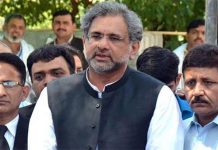As the Pakistan Tehreek-e-Insaaf (PTI) government presented its third budget, the ruling party has iterated that it aims to provide a pro-poor and growth-oriented budget. In midst of all this, the past performance of the PTI has seen crisis after crisis; cutting down on the pockets of consumers as industrial associations benefit from the shortage in supply and artificial shortages created by over-exporting due to government negligence. This article takes a look at some of the major crisis during the last three years of the PTI government and how and why they came about.
Wheat crisis
In November 2019 Pakistan was facing an acute shortage of wheat, a crisis that worsened for the next few months till January 2020.
When Pakistan Tehreek-e-Insaf (PTI) took over the helms of governmental affairs in August 2018, the price of the wheat flour was Rs50 per kg, however, the price had now reached Rs70. This was an increase of 20 PKR per KG since the inception of the PTI government.
Hiking up the price, the Flour Mills Association (FMA) complained that they did not receive any subsidy from the government while in addition to the price of raw commodity, the gas and electric prices were hiked up as well thus they did not have any other option but to bump up the flour prices.
Earlier in 2020, the price of this largely consumed food staple had surged by 42.13 per cent in the urban and 45.12 per cent in the rural areas during September. The Ministry of National Food Security had already anticipated a shortage of wheat for 2019 and 2020 in the wake of a shortfall in the output, which remained at 25.2 million tonnes against the targeted harvest of 27 million tonnes.
Despite the prediction of the shortfall by relevant bureaucrats, the government did not realise the gravity of the problem until June. The estimated shortage increased from a million metric tonnes (MMT) in June to 1.5 MMT in July.
There was a further upward revision to 3 MMT in September. A considerably high international wheat price stirred reluctance in the private sector to import more than 0.5 MMT. As a result, the Trading Corporation of Pakistan (TCP) was tasked to bridge the wheat import gap in August. The cabinet approved 1.5 MMT of wheat import by TCF. Out of these, Punjab’s government agreed to finance import of 0.7 with Khyber Pakhtunkhwa (K-P) importing 0.3 MMT and Pakistan Agricultural Storage and Services Corporation (PASSCO) procuring the remaining 0.5 MMT.
Sugar crisis
During late 2019 and up till late-2020 Pakistan faced a shortage of sugar for industries and domestic users, a crisis that has now rolled into a continuous hike in sugar prices and special government policies to ensure access to sugar. An example of the lingering crisis is the sugar shortage this past Ramzan in 2021, where utility stores had to ration sugar at subsidised prices for domestic consumers.
An inquiry report regarding the crisis has been made public that aimed to probe at the reasons for thr crisis.
The production of sugar in 2016-17 and 2017-18 was more than the estimated domestic consumption, hence it was exported. The estimated domestic consumption of Pakistan is around 5.2 million metric tonnes (mmt) per year. In 2016-17, Pakistan had a record 7.08mmt production of sugar while the production in 2017-18 was 6.63mmt.
The inquiry committee found that the export of sugar was not justified as sugarcane production was expected to be low in harvesting season 2018-19 and with the export of sugar in Jan 2019, the prices of sugar sharply increased.
It said the exporters gained benefit in two ways — first, they were able to gain subsidy and second they made a profit from increasing sugar prices in the local market [the price increased from Rs55 per kg in December 2018 to Rs71.44 in June 2019, although the GST increase was implemented from July 2019].
It said that no government, except Punjab’s, provided the subsidy and the financial layout of subsidy was Rs3bn.
The committee observed that the Sugar Advisory Board failed to take a timely decision to ban the export of sugar.
The companies owned by Shamim Ahmed Khan exported 29.60 per cent of total production and got an export subsidy of Rs406m last year.
The other group, identified as RYK group, has four sugar mills owned by Makhdoom Umar Shehryar [a relative of federal minister Khusro Bakhtiar], Chaudhry Munir of the opposition PML-N and Monis Elahi of PML-Q, which is part of the ruling coalition. Among them, they availed of a total of 15.83 per cent export subsidy, amounting to Rs3.944bn during 2015-18.
The report said that during 2018-19, Mr Tareen’s companies exported 17.24 per cent of the total production of sugar and availed of 22.71 per cent of total export subsidy, amounting to Rs561million while companies in the RYK group obtained the export subsidy of Rs452m last year.
Petrol crisis
Another shortage and crisis Pakistan faced was the elongated petroleum crisis with a shortage of supply for industrial and transport consumers, while also facing a heavy price hike from mid-20202 to mid-202.
The oil industry had slowed down its imports and local production as the price decline hit the market in December-January. But red flags were already up when the coronavirus led to lockdowns by the end of March and consumption dropped. The wheat harvest was just around the corner when local refineries started to close down for limited offtake by oil marketing companies (OMCs).
The supply chain disruption was nationwide and affected all major cities and towns in Punjab, Balochistan, Azad Jammu and Kashmir and Gilgit-Baltistan. Khyber Pakhtunkhwa officially said its 77 petrol stations had completely dried out.
By the first half of April, all stakeholders were fully aware of the initial shortages. The Oil and Gas Regulatory Authority (Ogra), the Petroleum Division and the oil industry were making friendly communications that amounted to nothing more than moving files.
The initial 163-page report held the oil marketing companies responsible for triggering the fuel crisis by delaying supply to petrol pumps and earning Rs6 to 8 billion illegally by manipulating fuel prices.
It also uncovered a wide range of irregularities in the country’s oil sector without any check and balance and at least Rs250 billion worth of oil smuggling from Iran.
Gas crisis
In late December 2020, the Sui Southern Gas Company (SSGC) has said that CNG supply to pumping stations in Sindh and Balochistan will be stopped for two days in a week, Saturday and Monday, although the SSGC says that as full as possible a supply will be maintained for Balochistan. In Punjab, it has also been announced that gas to CNG stations will be cut and in Khyber Pakhtunkhwa, it has been suspended by SNGPL for four days. And this period could of course be extended in the future.
This was the start of a crisis that the government could foresee and yet failed to manage. The shortfall of natural gas reached its peak in January 2021.
The gas shortage in Karachi led to domestic and industrial consumers, as well as tandoors, teahouses, and hotels losing access to natural gas and faced strict rationing. The severe cold weather has further aggravated the citizens’ plight as it has led to a reduction in pressure and the suspension of gas supply in residential areas.
Similarly, In Gujranwala, residents could not light their stoves due to gas shortage and were forced to buy expensive cylinders.
Sui Northern Gas Pipeline (SNGPL) faced a shortage of nearly 500 mmcfd and had to stop the supply of Regasified Liquefied Natural Gas (RLNG) to the power sector.
The government went for an urgent tender which opened on December 14 with pricey bids with 26-30 per cent of Brent at $12.95 to $15.28 per MMBtu.









